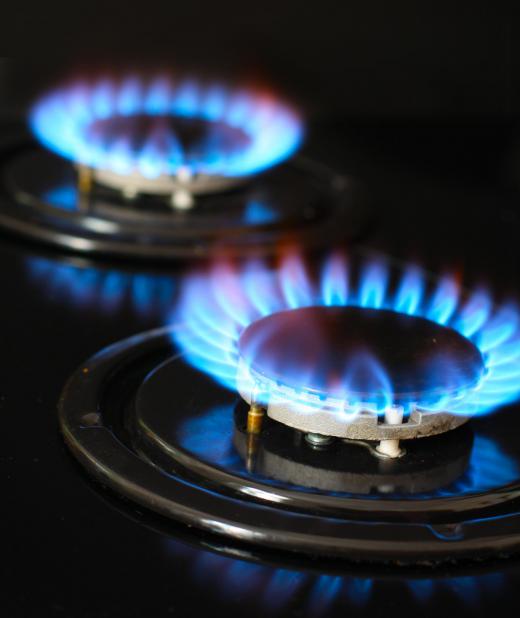Flue design refers to the structure of a vertical chimney that vents hot air as a byproduct of combustion in a stove, fireplace, boiler, or other heat-producing system. Design choices for flues are either internal or external to a building and can be modified to support more than one heat source or lined to resize an existing chimney. The airflows in a flue design include those using natural vents and those supported by a blower or fan.
The simplest flue design type is an internal vertical tube or channel running directly from the heat source up through the roof of the building. In residential situations, the flue must be insulated wherever it meets walls or ceilings to protect these structural components from the high flue temperatures. For safety, flues are often lined throughout. The point where the flue meets the roof of the building must be sealed carefully on the outside against the weather.

To accommodate two different heat sources and have only one opening in the roof, a double flue design can be constructed. The vertical space of the flue is divided into two separate channels, allowing the exhaust from the two heat sources to vent independently. This configuration can also vent exhaust from heat sources on different floors of a building.

An external flue may lead from the heat source directly to the outside and then run vertically the rest of its height. This flue design can be less efficient because the entire flue is exposed to cooler outside air. Joining the heat source to the flue and avoiding eaves at the roofline requires the use of angled connections at no more than a 45 degree angle from vertical. These joints can require more frequent cleaning because of increased soot accumulation at the bends.
To refit an existing chimney for a new heat source, a flue kit can be a good flue design solution. The flue kit includes sheet metal tubes that can be cut to fit, assembled, and used inside the existing chimney. This solution is generally easier and more cost effective than the construction of a completely new chimney.
A flue design may be open, balanced, or fanned. A system using only natural ventilation is an open system. A balanced system is one where the heat source does not draw air from the surrounding room, but is sealed and has its own vent or air source. In a tightly sealed modern home where no outside air is entering the house, the movement of air up the chimney can be prevented if the heat source lacks an independent air supply. A fanned system incorporates a blower, turning it into a forced draft system, which assures air supply to the heat source and the movement of air up the flue.
